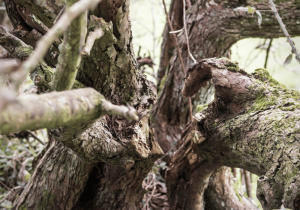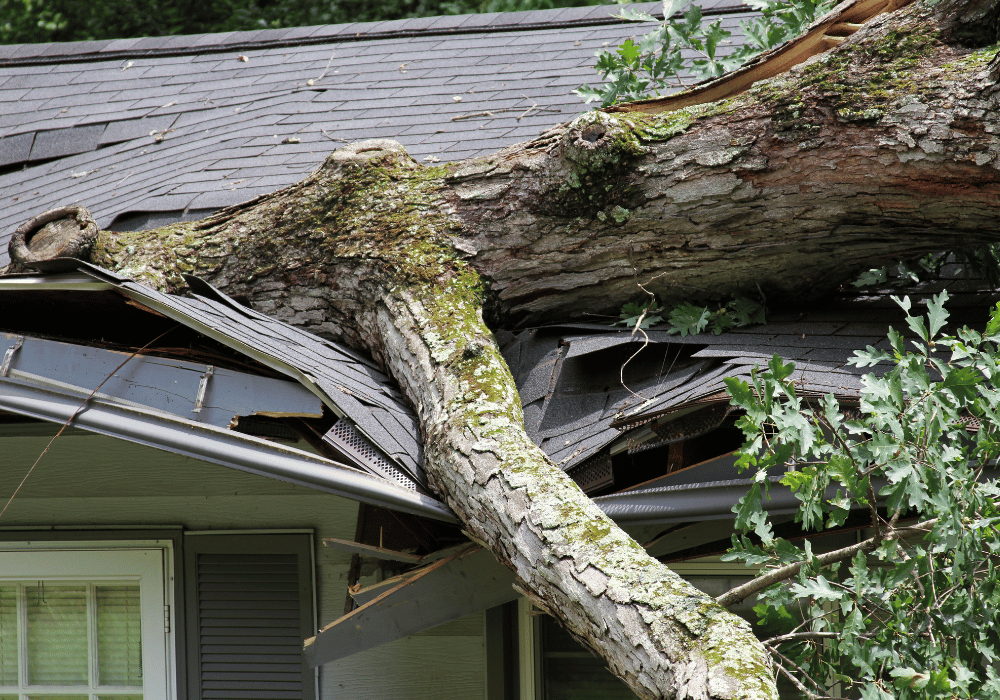Severe storms can wreak havoc on your property, leaving behind downed tree limbs or, worse, storm-damaged trees that pose serious hazards. Knowing how to address this type of situation quickly and safely is crucial for homeowners. Ignoring damaged trees can lead to injuries, property damage, and additional expenses. This guide will walk you through everything you need to know about handling storm-damaged trees, from assessing the level of danger to taking proactive steps for future prevention. Whether you encounter minor debris or require professional emergency tree removal, this comprehensive guide prioritizes safety and offers practical solutions for tree-related storm aftermath.
Assessing the Damage: Identifying Hazardous Trees
After the storm has passed, step outside and assess your property for damage. A thorough visual inspection ensures you can identify potential safety hazards and take prompt action.
 Signs of Dangerous Trees
Signs of Dangerous Trees
- Leaning Trees: If a tree is leaning dramatically—particularly toward your house, driveway, or power lines—it may be at risk of falling.
- Cracked or Split Trunks: Vertical cracks or splits in the tree’s trunk indicate structural instability, which can lead to a collapse without warning.
- Hanging Limbs: Partially broken branches, also known as “widow-makers,” can fall at any time and cause severe injuries or further damage.
- Uprooted Trees: Trees that have been partially or fully uprooted are highly unstable and need immediate attention.
- Utility Line Entanglement: If tree limbs are tangled in power lines, they pose an extreme risk of electrocution and property damage.
By inspecting your trees and surroundings thoroughly, you’ll get a better sense of what repairs or removals are needed and how urgent the situation is.
When to Call a Professional: Recognizing the Need for Expert Help
Some storm-damaged trees can be dealt with using basic tools, but many situations require the expertise of certified arborists or professional tree removal services. Attempting significant tree removal without the right skills and equipment could endanger you, your family, or your property.
When Should You Call a Professional?
- Large Trees: If the tree’s height exceeds 15 feet or if it requires climbing, you should leave it to a professional.
- Proximity to Structures: When a tree or branch is precariously close to your home or a neighboring building, specialized equipment may be needed to remove it safely.
- Electric Hazards: Only trained professionals should handle trees or branches near power lines, as improper removal could result in a dangerous electrical accident.
- Compromised Stability: If a tree appears unstable but hasn’t fallen yet, certified experts can safely address the issue.
Professional services often guarantee not only safe removal but also compliance with local regulations.
Emergency Tree Removal Process: What to Expect
If your inspection reveals significant or high-risk damage, you’ll likely need emergency tree removal services. Understanding the process can help you feel more prepared during a stressful time.
Steps in Emergency Tree Removal
- Initial Assessment
The tree removal team will inspect the impacted area to identify hazards such as power lines, nearby structures, or unstable branches.
- Stabilization
If the tree poses an immediate risk, professionals may stabilize it—for example, by anchoring it with ropes or cutting smaller limbs first.
- Equipment Setup
Depending on the scenario, professionals may use chainsaws, cranes, or bucket trucks to safely access and remove the affected tree.
- Controlled Removal
Crews will cut and remove sections of the tree in a controlled manner, ensuring safety and minimizing damage to surrounding property.
- Debris Cleanup
After removal, professionals will clean up the area, including mulching smaller branches or hauling away larger sections.
Working with an experienced tree removal company ensures an efficient process, minimizes risk, and helps restore your property quickly.
Safety Precautions: Protecting Yourself and Your Property
Tree removal comes with inherent dangers, and safety should always be your top priority. Here are key precautions to follow:
- Stay Clear of Danger Zones: Avoid standing under any broken or leaning trees, as they can collapse unexpectedly.
- Wear Protective Gear: Use gloves, goggles, boots with steel toes, and a hard hat if you’re working near unstable branches or trees.
- Ensure Proper Tools: If attempting small-scale cleanup, use sharp, well-maintained tools like hand saws or pruners—not dull blades or unsuitable tools.
- Mark Hazard Areas: Use caution tape or temporary barriers to keep others away from the affected zone.
- Never Remove Trees Near Power Lines: This is an extreme hazard that requires professional handling.
Prioritize your safety and that of others around you by erring on the side of caution in storm-damaged conditions.
Cost Considerations: Understanding the Expenses of Emergency Tree Removal
Emergency tree removal often involves specialized equipment, urgent scheduling, and professional expertise, which can make it more expensive than standard tree services. However, pricing typically varies based on several factors.
 Factors Affecting Costs
Factors Affecting Costs
- Tree Size: Larger or older trees generally require more effort and equipment to remove.
- Damage Severity: If a tree is tangled in wires or threatening nearby structures, fees may increase due to the complexity.
- Location: Removal costs may vary depending on how close the tree is to your home or other obstacles.
- Debris Cleanup: The volume of debris or stump removal needed can influence final expenses.
- Emergency Fees: Additional charges may apply for after-hours services or rapid response times necessary during emergencies.
While costs may feel significant, remember that timely tree removal can save you from more costly repairs or lawsuits down the line.
Preventing Future Damage: Tips for Tree Maintenance
Preventative care is essential to avoiding storm-related damage. Maintaining the health and stability of your trees reduces the likelihood of hazards during severe weather.
Tree Maintenance Tips
- Prune Regularly: Schedule regular pruning to remove weak branches, shape the tree, and allow for proper growth.
- Inspect Annually: Check your trees for cracks, pests, or diseases that might weaken their structural integrity.
- Plant Wisely: Avoid planting large trees near power lines, foundations, or other vulnerable areas of your property.
- Support Weakened Trees: Use cabling or bracing to reinforce trees that are leaning or have heavy top branches.
- Hire an Arborist: A certified arborist can assess potential risks and recommend tailored solutions for your property.
Taking these preventative steps will give your trees the best chance of thriving, even in extreme conditions.
Dealing with storm-damaged trees doesn’t have to be overwhelming. By recognizing high-risk situations, taking proper safety precautions, and knowing when to call a professional, you can safeguard your home and loved ones. Whether you’re addressing today’s damage or planning for the next storm, a proactive approach and regular tree maintenance go a long way. If you’re facing a storm-damaged tree on your property, don’t wait—contact a certified tree removal service to assess the situation and restore your space to safety.

